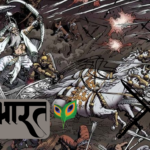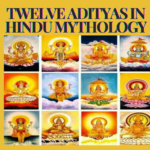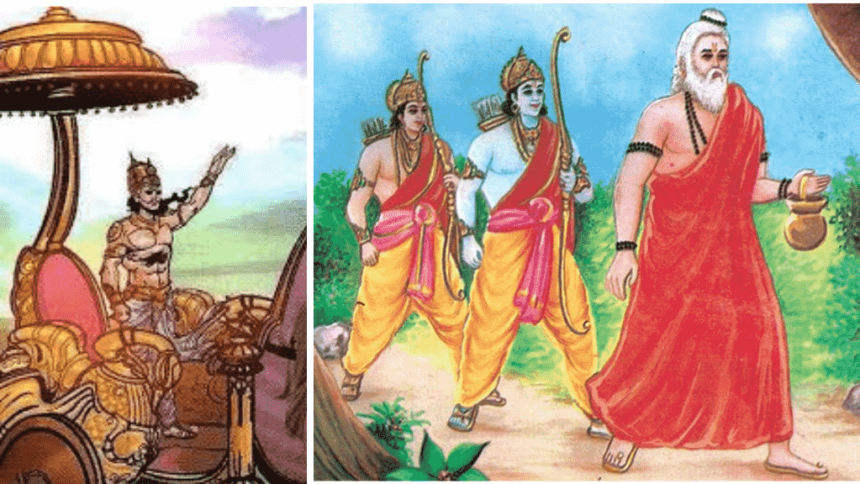In the vast landscape of ancient Indian epics, some stories stand out for their unique blend of mysticism and moral teachings. One such story is that of Asamanjas, a character whose story is deeply rooted in both the Bhagavad Purana and the Ramayana. The name “Asamanjasa” itself is interesting, as it translates to “confusion”, “delusion” or “dilemma”, reflecting the complex mental state of the character concerned. This article explores the rich legend surrounding Asamanjasa, exploring the significance of his actions and the broader implications of his story in the context of ancient Indian literature. So Today we will discuss about the story of Asamanjas.
Background: King Sagar and his legacy
The story of the dilemma begins with King Sagar, a prominent figure in Hindu mythology. King Sagara was a powerful ruler, renowned for his piety and devotion to his kingdom. Despite his many virtues, he and his two wives, Sumati and Kesini, remained childless for many years, a cause of great sadness for the king.
Wives of King Sangara
According to the legends, King Sagara had two wives, Keshini and Sumati. The story goes that King Sagara longed for children but was initially childless. In his quest for progeny, he performed a great sacrifice (yajna), and as a result, his wives were blessed with children.
- Keshini: Keshini, the first wife, gave birth to a single son named Asamanja. Asamanja was notorious for his cruel behavior, but he later became the father of King Sagara’s grandson, Anshuman, who played a significant role in the legend of the descent of the Ganges River.
- Sumati: Sumati, the second wife, gave birth to 60,000 sons. These sons were powerful but ultimately met a tragic end when they were cursed by the sage Kapila. Their quest to find a sacred horse led to their destruction, and their ashes remained unpurified until their descendant, Bhagiratha, brought the Ganges River down to earth to cleanse their souls.

Prediction of Sage Aurva
The turning point in King Sagara’s life came with the arrival of Sage Aurva, a wise and revered sage. According to the prophecy made by Sage Aurva, one of Sagara’s wives would give birth to a single son, while the other would give birth to sixty thousand sons. The choice of who would give birth to a single heir and who would give birth to multiple was left to the wives, marking the beginning of an important chapter in the king’s legacy.
Sumati, known for her profound wisdom, chose to give birth to sixty thousand sons, while Kesini chose to give birth to one son, eventually known as Asamanjas. This decision would have far-reaching consequences for the kingdom and generations to come.
Birth and Early Life of Asamanjas
Asamanjas was born into a life full of privilege and expectations. As the only son of King Sagara and Queen Kesini, he was the heir to a vast empire and the future bearer of his father’s legacy. However, from an early age, Asamanja displayed behavior that troubled those around him.
Asamanja: A Story of Confusion and Delusion
The meaning of the name “Asamanja” begins to reveal itself through the actions of the young prince. Asamanja was often described as very troubled, exhibiting signs of confusion or delusion. His actions were erratic and often cruel, causing great distress to the people of the kingdom. There are stories of Asamanja throwing young children into the river, an act that terrified citizens and raised serious concerns about his ability to rule.
These actions seemed to be a stark contrast to the noble lineage from which he descended, leading to a growing sense of fear and confusion among the people. The king himself was deeply troubled by his son’s behavior, torn between his paternal love and his duties as a ruler.
Asamanjas’ exile
As Asamanjas grew older, his actions became unbearable. The people of the kingdom, who had once placed great hopes in their future king, began to demand that something be done. The opposition grew so much that King Sagara was forced to make a difficult decision: he exiled his son from the kingdom.
After the exile
Asamañjas’ exile marked a turning point in the story. While the people of the kingdom were relieved to be free from the tyranny of the troubled prince, the king’s heart was heavy. The decision to exile his only son was not taken lightly, and it had a profound impact on the future of the kingdom.
Now living in exile, Asamanjas continued to struggle with his inner demons. However, there are details that suggest a transformation in his later years. Some versions of the story indicate a period of redemption, where Asamanjas tried to atone for his past actions. This aspect of the story highlights the possibility of redemption, even for those who have fallen far from grace.
Asamanjas’ exile
The story of Asamanja is one of the most complex and thought-provoking narratives in ancient Indian literature. It raises questions about the nature of power, the burden of expectations, and the possibility of liberation. Despite his troubled life, Asamanja remains an important figure, a reminder of the challenges that come with great power, and the consequences of one’s actions.
Broader Implications
The story of Asamanja also reflects broader themes prevalent in the Bhagavad Purana and the Ramayana. The concept of dharma (duty) is central to both epics, and the story of Asamanja serves as a warning about the consequences of not following one’s dharma. His actions, driven by confusion and delusion, not only led to his downfall, but also caused significant turmoil within the kingdom.
Confusion and the Modern Perspective
In the modern context, the story of Confusion can be seen as a reflection of the struggles faced by individuals when dealing with mental health problems or the burden of expectations. Themes of Confusion
The story also serves as a reminder that redemption is always possible, even for those who have made grievous mistakes. Asamanjas’s eventual attempt at atonement offers a glimmer of hope in an otherwise tragic tale.






